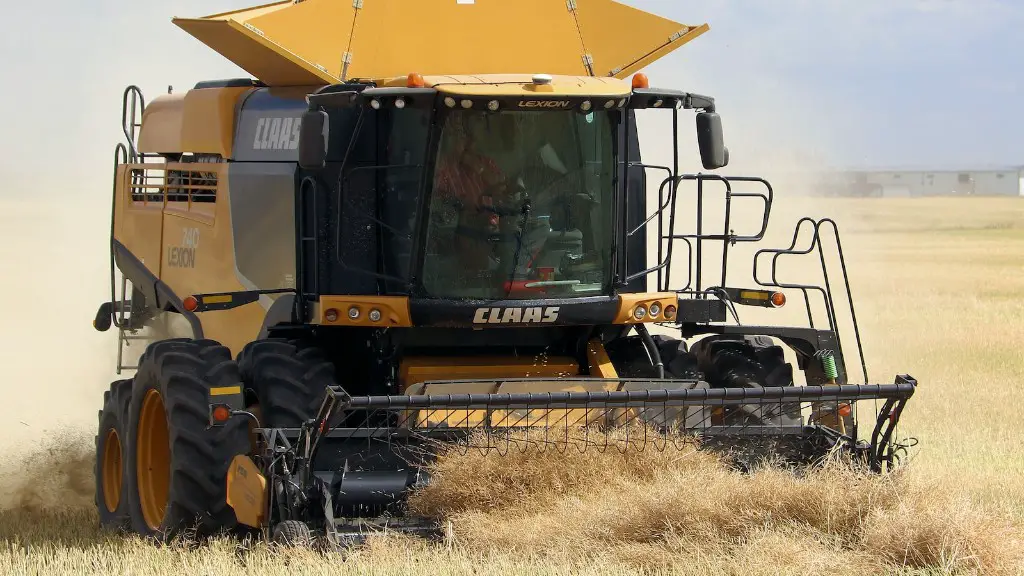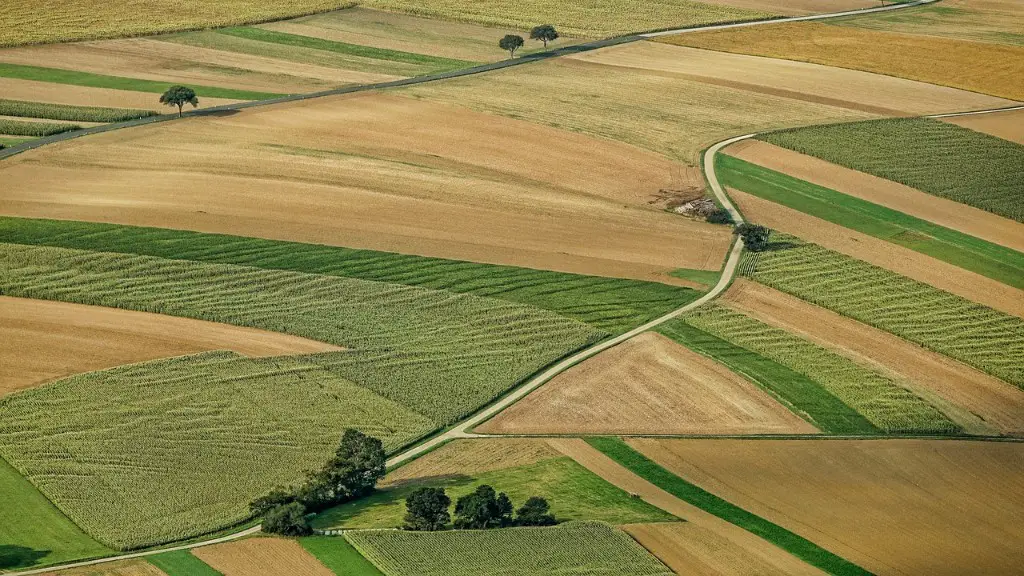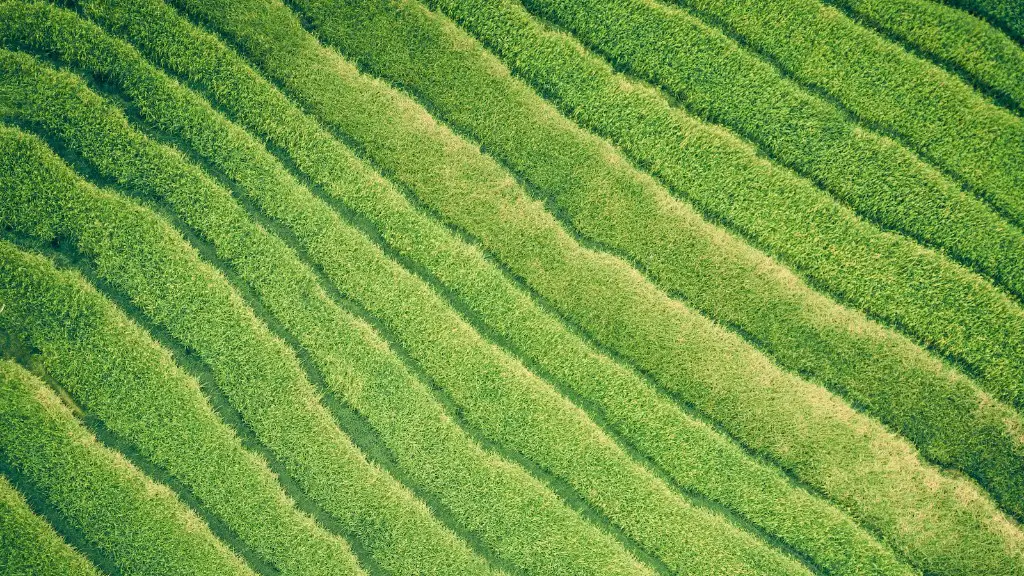Over the centuries, there have been many innovations in agriculture that have made it the complex and efficient industry it is today. One of the most important innovations was the development of mechanized equipment such as tractors and combines. This allowed farmers to greatly increase their production while using less labor. Other important innovations have included the development of chemical fertilizers and pesticides, which have made it possible to produce higher yields with less risk of crop failure.
The advent of agriculture made it possible for humans to domesticated plants and animals, which led to the development of civilizations. Agriculture allowed for the growth of cities and the rise of civilizations. It also allowed for the growth of food surpluses, which allowed for the development of trade and commerce.
What made the agricultural revolution possible?
The Agricultural Revolution was a period of significant agricultural development that took place in Europe in the 18th century. This revolution started because of developments in technology, a shift towards industrialization, and the growth of cities. In the early 18th century, British inventor Jethro Tull perfected the seed drill, which allowed farmers to efficiently sew seeds in rows rather than scattering seeds by hand. This new technology, along with others such as the horse-drawn hoe and threshing machine, greatly increased the productivity of European farms. The Agricultural Revolution also saw a shift from subsistence farming to commercial farming, as farmers began to grow crops for sale rather than just for their own consumption. This increase in agricultural production led to the growth of cities, as people flocked to urban areas in search of jobs and opportunities. The Agricultural Revolution had a profound impact on European society and laid the foundation for the Industrial Revolution of the 19th century.
Inventions have always played a big role in how farmers produce food. The reaper, thresher, steam engine, combine, automobile, tractor, and hydraulics have all changed the way farmers produce food.
The reaper was invented in the early 1800s and changed the way farmers harvested small grains. Before the reaper, grains were harvested by hand. The reaper made it possible to harvest grains much faster and more efficiently.
The thresher was invented in the early 1800s as well. Before the thresher, farmers had to beat the grain by hand to remove the kernels from the straw. The thresher made it possible to thresh grain much faster and more efficiently.
The steam engine was invented in the early 1800s as well. The steam engine changed the way farmers transported their goods. Before the steam engine, farmers had to use animals or their own muscle power to transport their goods. The steam engine made it possible to transport goods much faster and more efficiently.
The combine was invented in the early 1900s. The combine changed the way farmers harvested and processed wheat. Before the combine, farmers had to harvest wheat by hand and then process it by separating the wheat from the chaff.
Why did humans transition to agriculture
However, new research suggests that the real reason our ancestors started farming was to ward off vicious biting insects.
Scientists have long thought that our ancestors took up farming some 12,000 years ago because it was a more efficient way of getting food. But new research suggests that the real reason our ancestors started farming was to ward off vicious biting insects.
The study, published in the journal Science, found that the rise of agriculture coincided with a decline in the abundance of biting insects. The researchers believe that our ancestors began farming in order to create open landscapes that would discourage the insects from breeding.
The findings suggest that the need to protect ourselves from insects was a key factor in the development of agriculture. It also provides new insight into the reasons why our ancestors chose to settle down in one place, instead of leading a nomadic lifestyle.
Agriculture is the process of producing food, feed, fiber, and other desired products by the cultivation of certain plants and the raising of domesticated animals. The factors that influence agriculture are climate, soil type, irrigation, technology, and population density.
Climate refers to the average weather conditions of a particular area. The climate influences what crops can be grown and how well they will grow. Soil type is another important factor because it affects the amount of nutrients that are available to plants. Irrigation is necessary in areas where there is insufficient rainfall. Technology plays a role in agriculture by providing farmers with the tools and knowledge to be more efficient and productive. Population density is a factor because it affects the demand for food and other agricultural products.
When did agriculture become possible?
The development of agricultural communities allowed humans to transition from a nomadic hunter-gatherer lifestyle to a more settled way of life. This change occurred approximately 10,000 years ago when humans began to domesticate plants and animals. By establishing domesticity, families and larger groups were able to build communities. This new way of living led to the development of civilizations and the growth of cities and other settlements.
New tools and the advancement of old ones were important factors in the Agricultural Revolution. The invention of the plough, seed drill, and threshing machine improved the efficiency of agricultural operations and helped to increase food production.
What invention helped agriculture?
John Deere’s invention of the steel plow was a game changer for farmers. The plow was able to scour the sticky prairie sod from the blade, making it much easier and faster to turn the sod. This led to the rapid adoption of horse-drawn reapers, sulky plows, mowers and threshing machines, which allowed one farmer to cultivate and harvest much larger holdings.
The invention of the plough was a turning point in the history of Agriculture. It made farming easier and more efficient, which allowed for the growth of civilizations.
What was the biggest advancement in agriculture
The Green Revolution, also known as the Third Agricultural Revolution, was a period of rapid technological and societal change that occurred in the mid-20th century. It was marked by an increased use of synthetic fertilizers and pesticides, new irrigation technologies, and the introduction of high-yielding crop varieties. These innovations helped to increase farm productivity and incomes, but also had significant environmental impacts, including the depletion of water resources and the creation of new pesticide-resistant pests and weeds.
Farming began c 10,000 BC on land that became known as the FERTILE CRESCENT. Hunter-gatherers, who had traveled to the area in search of food, began to harvest (gather) wild grains they found growing there. They scattered spare grains on the ground to grow more food.
How did early humans start agriculture and?
The Egyptians were among the first people to practice agriculture on a large scale. They started in the pre-dynastic period from the end of the Paleolithic into the Neolithic, between around 10,000 BC and 4000 BC. This was made possible with the development of basin irrigation.
Farming was a major breakthrough for early humans. By learning how to grow plants and raise animals, they were able to control their food sources and eventually settle in one place all year round. This led to the development of civilizations and the progress of humanity as a whole.
What is the most important factor in agriculture
Soil fertility is a key factor in agricultural production, as it directly affects the ability of crops to grow. Fertility is determined by a number of physical, chemical and biological attributes, all of which must be taken into account when managing agricultural land. For example, soil texture (the relative proportions of sand, silt and clay) affects water retention, nutrient availability and rooting depth, while soil pH can likewise influence crop growth. Good fertility management therefore requires a thorough understanding of the factors involved.
There are numerous factors that affect the distribution of agriculture. Climate, soil type, slope, land tenure, market, transport, capital, and technology are all important considerations. Each of these factors can influence the type of crops that can be grown in an area, as well as the yield and quality of those crops.
What are three impacts of agriculture?
Agriculture affects the environment in many ways. It can lead to soil erosion and water pollution, and contribute to climate change. It can also cause deforestation.
There are a few reasons why the onset of the Holocene might be linked to the start of agriculture. One is that the warmer, wetter, higher CO2 conditions of the Holocene would have made conditions more favorable for plant growth. Another possibility is that the increased food availability made it possible for early human populations to support the development of agricultural societies. Whatever the reason, it’s clear that the two events are closely linked in time.
What are 2 theories that explain the origin of agriculture
There are two groups of theories that attempt to explain why agriculture originated: environmental and demographic. Environmental determinism is the explanation of cultural behavior that sees human action in response to environmental circumstances. In other words, this theory suggests that the environment caused people to start farming. The second theory, demographic, suggests that it was population growth that caused people to turn to agriculture. This theory proposes that there was simply not enough food to support the growing population, so people had to start farming in order to survive.
Farming has a long history in the world, dating back to the end of the Paleolithic period. In those early days, people started to grow staple food crops like wheat and barley. They also began to cultivate industrial crops like flax and papyrus. In India, wheat, barley and jujube were domesticated by 9,000 BC, and soon after that, sheep and goats were domesticated as well. Through the millennia, farming has continued to be an important part of human life, providing us with food and other products that we need to survive and thrive.
Conclusion
The invention of agriculture made it possible for humans to domesticated plants and animals, which led to the development of civilizations. Agriculture allowed for the growth of cities and the rise of civilizations. Agriculture made it possible for humans to control their food supply, which led to a population explosion.
The United States has some of the most productive farmland in the world. This is due in part to the country’s size, climate, and topography. The United States also has a long history of agricultural innovation. Farm policies and programs have helped American farmers become more efficient and productive. Today, the United States is a leading producer of many agricultural products.





